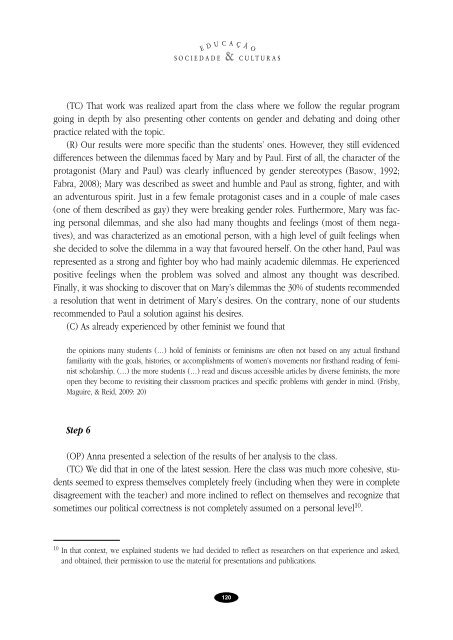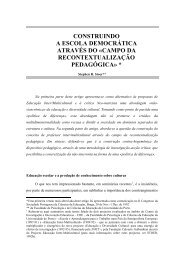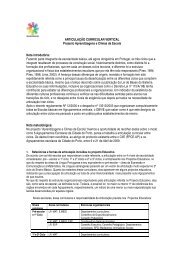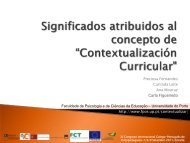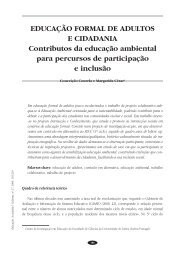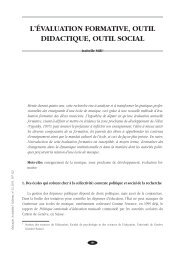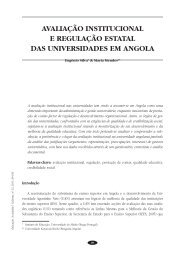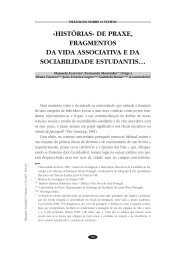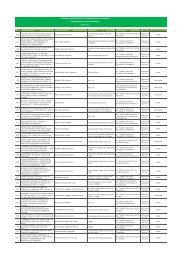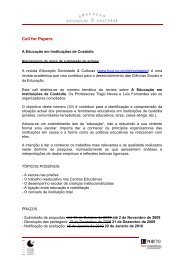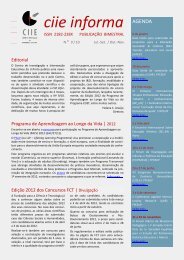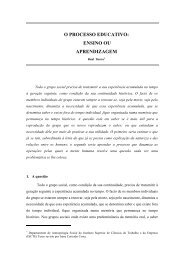REFLECTINGON AN ACADEMIC PRACTICE TOBOOST GENDER ...
REFLECTINGON AN ACADEMIC PRACTICE TOBOOST GENDER ...
REFLECTINGON AN ACADEMIC PRACTICE TOBOOST GENDER ...
You also want an ePaper? Increase the reach of your titles
YUMPU automatically turns print PDFs into web optimized ePapers that Google loves.
(TC) That work was realized apart from the class where we follow the regular programgoing in depth by also presenting other contents on gender and debating and doing otherpractice related with the topic.(R) Our results were more specific than the students’ ones. However, they still evidenceddifferences between the dilemmas faced by Mary and by Paul. First of all, the character of theprotagonist (Mary and Paul) was clearly influenced by gender stereotypes (Basow, 1992;Fabra, 2008); Mary was described as sweet and humble and Paul as strong, fighter, and withan adventurous spirit. Just in a few female protagonist cases and in a couple of male cases(one of them described as gay) they were breaking gender roles. Furthermore, Mary was facingpersonal dilemmas, and she also had many thoughts and feelings (most of them negatives),and was characterized as an emotional person, with a high level of guilt feelings whenshe decided to solve the dilemma in a way that favoured herself. On the other hand, Paul wasrepresented as a strong and fighter boy who had mainly academic dilemmas. He experiencedpositive feelings when the problem was solved and almost any thought was described.Finally, it was shocking to discover that on Mary’s dilemmas the 30% of students recommendeda resolution that went in detriment of Mary’s desires. On the contrary, none of our studentsrecommended to Paul a solution against his desires.(C) As already experienced by other feminist we found thatthe opinions many students (…) hold of feminists or feminisms are often not based on any actual firsthandfamiliarity with the goals, histories, or accomplishments of women’s movements nor firsthand reading of feministscholarship. (…) the more students (…) read and discuss accessible articles by diverse feminists, the moreopen they become to revisiting their classroom practices and specific problems with gender in mind. (Frisby,Maguire, & Reid, 2009: 20)Step 6(OP) Anna presented a selection of the results of her analysis to the class.(TC) We did that in one of the latest session. Here the class was much more cohesive, studentsseemed to express themselves completely freely (including when they were in completedisagreement with the teacher) and more inclined to reflect on themselves and recognize thatsometimes our political correctness is not completely assumed on a personal level 10 .10 In that context, we explained students we had decided to reflect as researchers on that experience and asked,and obtained, their permission to use the material for presentations and publications.120


